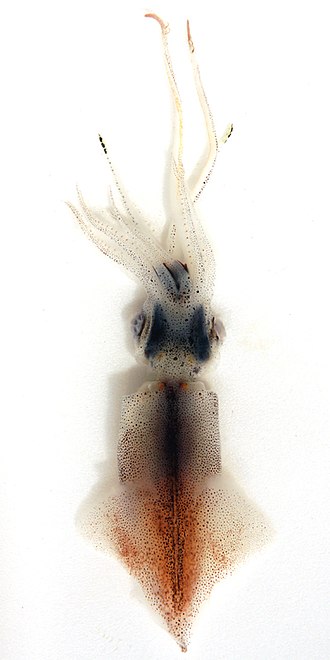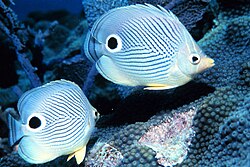Translations:AY Honors/Animal Camouflage - Advanced/Answer Key/24/en
From Pathfinder Wiki
- Concealing coloring: also called color matching, helps the animal blend into its surroundings.
- Disruptive coloration: spots, stripes, or patterns that break up the outline of the animal against its background. This is the principle behind most common military clothing camo
- Disguise: looking like something else, usually an inanimate object
- Mimicary: looking like a dangerous version of the animal
- Seasonal variation: having coloration that varies with season, usually summer to winter, often uses concealing coloring seasonally like the arctic fox and snowshoe hare
- Side or Thayer countershading: having graded toning from dark above to light below, so as to cancel out the apparent effect of self-shadowing when viewed from the side
- Above/below countershading: having different colours or patterns above and below, to camouflage the upperside for observers from above, and the underside for observers from below. Usually birds like seagulls, and swimming things like some sharks.
- Counterillumination: generating light to raise the brightness of an object to match a brighter background, as of a marine animal's underside against the sea surface. Example is a firefly squid
- Transparency: letting so much light through that the object is hard to see in typical lighting conditions. Jelly fish are the classic example
- Reflection (silvering): reflecting enough light, usually from the sides, to make the object show as a (reflected) patch of the environment
- Self-decoration: covering oneself in materials from the environment. Decorator crab
- Concealment of shadow: having features such as flanges or a flattened body to reduce or hide the shadow
- Irregular outline: having an broken or complex outline (that may help delay recognition by an observer)
- Feature disruption: having high contrast markings that specifically break up or conceal distinctive features of the object
- Distraction: having coloration that distracts an observer's attention away from a feature of the object (such as the head or eye) Foureye butterflyfish
- Active camouflage: changing the coloration rapidly enough to maintain resemblance to the current background while moving. Chameleon and Octopuses
- Motion camouflage: following a track such that the object remains between a starting point and the target (e.g. prey) at all times, rather than going straight for the target. Hoverfly
- Motion dazzle: rapidly moving a bold pattern of contrasting stripes, confusing an observer's visual processing, Zebras



